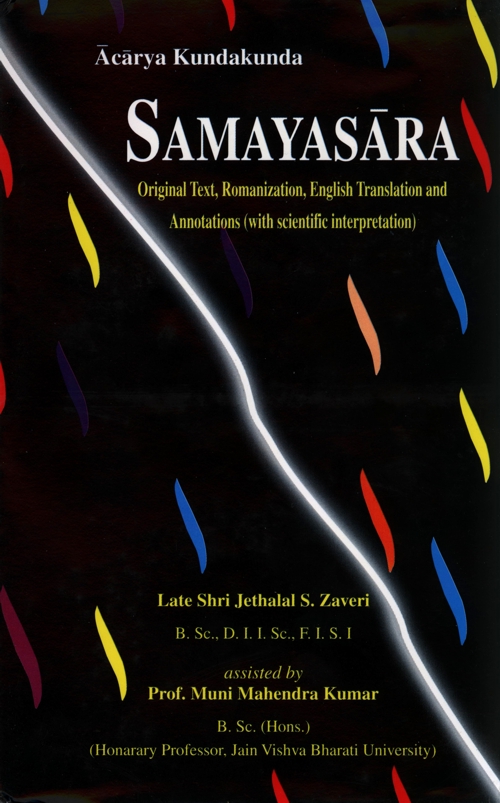
jo passadi appāṇaṃ abaddhapuṭṭhaṃ aṇaṇṇayaṃ ṇiyadaṃ.
avisesamasaṃjuttaṃ taṃ suddhaṇayaṃ viyāṇāhi.. 14

jo passadi appāṇaṃ abaddhapuṭṭhaṃ aṇaṇṇamavisesaṃ.
apadesasaṃtamajjhaṃ passadi jiṇasāsaṇaṃ sawaṃ.. 15
(Jo) The view which (passadi) recognizes (appāṇaṃ) the pure self as [totally] free from (abaddhapuṭṭhaṃ) (i) bondage (ii) defilement (aṇaṇṇayaṃ) (iii) free from adulteration-impurity (ṇiyadaṃ) (iv) free from unsteadiness (avisesaṃ) (v) free from distinction of the faculties of knowledge and intuition (asaṃjuttaṃ) and (vi) free from association with non-self [alien], (taṃ viyāṇāhi) is called (suddhaṇayaṃ) pure (point of) view.
(Jo) The enlightened soul who (passadi) recognizes (appāṇaṃ) the pure self which is (abaddhapuṭṭhaṃ), (aṇaṇṇam), (avisesaṃ) [totally] free from bondage, defilement, impurity, etc. (all the six alien factors mentioned in the preceding verse and also is (apades) non-corporeal [indivisible], (saṃta) absorbed in his own beatitude, (majjhaṃ) as his own real self, (passadi) has unravelled/realized ( jiṇasāsaṇaṃ sawaṃ) the whole Jain philosophy.
Annotations:
We have already seen the necessity and wisdom of the application of different nayas or points of view, which is a methodology specially designed for the purpose of explaining the extremely complex nature and defining the empirical and ultimate attributes of the self (jīva). Broadly, there are two main points of view: niścaya naya and vyavahāra naya. The former recognizes and explains the transcendentally real and integrated nature of the self. In this view there is no distinction between the substance and its attributes.[1] The self (jīva) is viewed as an unbroken/undivided unity with all its attributes synthesized and fused within itself. In the other view (vyavahāra naya) the complex nature of the self is broken down into a multiplicity of diverse qualities and modes. We shall revert to this methodology in latter verses.
The niścaya naya is, again, divided into śuddha or pure niścaya and aśuddha or modified niścaya. The former holds the jīva in its totally pure and undivided state. Freed from all its material encumbrances and limitations, the pure self always shines in its full glory. In the above verses the soul in its purest state is described.
This, however does not mean that other aspects which are dealt by vyavahāra naya are unreal. In the methodology of nayavāda, they are merely put aside while our attention is concentrated on the aspect with which the self may be identified at the moment, that is niścaya naya.
The purest state of the soul is not merely a matter of theoretical interest—an ideal—but a reality already realized by not just a few but innumerable souls. Apprehension and understanding of the ultimate pure nature of the self is an efficient tool in the hands of the aspirants whose objective is to realize that state. Jain philosophy is the right path leading to it. Hence, he, who has grasped the significance of the śuddha niścaya naya has realized the purport of the philosophy.
 Jethalal S. Zaveri
Jethalal S. Zaveri
 Prof. Muni Mahendra Kumar
Prof. Muni Mahendra Kumar

